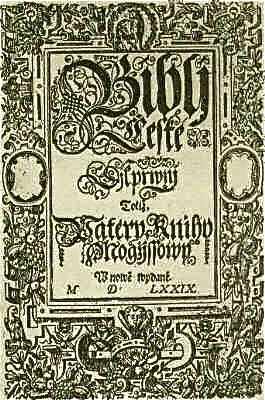Czech language
[[File:Synagoga_v_Úštěku.ogg|Synagoga v Úštěku.ogg Czech language is a West Slavic language that serves as the official language of the Czech Republic. It is spoken by over 10 million people as a first language and is also recognized as a minority language in Slovakia, Austria, and Ukraine. Czech is closely related to Slovak, Polish, and Sorbian in terms of linguistic characteristics.
History[edit | edit source]
The Czech language has its origins in the early Slavic dialects that were spread across Eastern Europe around the 6th century. It evolved from Old Czech during the medieval period, with significant literary development in the 14th and 15th centuries, largely due to the work of religious reformer Jan Hus. Hus's efforts to reform the church included translating the Bible into Czech, which standardized the language and spread its use among the Czech people.
Dialects[edit | edit source]
Czech dialects are traditionally divided into three main groups: Bohemian, Moravian, and Silesian, named after the regions in which they are primarily spoken. However, with increased mobility and communication, dialectal differences have been diminishing.
Grammar[edit | edit source]
Czech grammar is highly inflectional, with a complex system of noun and verb declensions that convey meanings related to tense, case, gender, and number. The language has seven cases for nouns and adjectives, which play a crucial role in sentence structure and meaning.
Writing System[edit | edit source]
The Czech language uses the Latin alphabet, supplemented by several special characters that include diacritics, such as the háček (ˇ) and the acute accent (´). These characters are essential for denoting specific sounds in Czech and for distinguishing between words that would otherwise be spelled the same.
Phonology[edit | edit source]
Czech phonology is characterized by a distinction between hard and soft consonants and the presence of vowel length to differentiate word meaning. The language is also known for its use of the ř sound, a unique trilled fricative that is challenging for many non-native speakers to pronounce.
Usage and Cultural Significance[edit | edit source]
Czech is not only a means of communication but also an important part of the Czech Republic's national identity and cultural heritage. The language has a rich literary tradition, with works ranging from medieval chronicles to contemporary literature. Czech has also made significant contributions to the fields of music, film, and science.
Education and Media[edit | edit source]
Czech is the primary language of education and media in the Czech Republic. It is taught as a first language in schools, and there are also opportunities for non-native speakers to learn Czech through language courses and immersion programs. The language is prevalent in all forms of media, including newspapers, television, and radio.
Challenges and Preservation[edit | edit source]
Like many languages, Czech faces challenges related to globalization and the dominance of English in international communication. However, there are ongoing efforts to preserve the language, including promoting its use in education, media, and public life, as well as fostering a sense of pride in Czech heritage and culture.
Search WikiMD
Ad.Tired of being Overweight? Try W8MD's physician weight loss program.
Semaglutide (Ozempic / Wegovy and Tirzepatide (Mounjaro / Zepbound) available.
Advertise on WikiMD
|
WikiMD's Wellness Encyclopedia |
| Let Food Be Thy Medicine Medicine Thy Food - Hippocrates |
Translate this page: - East Asian
中文,
日本,
한국어,
South Asian
हिन्दी,
தமிழ்,
తెలుగు,
Urdu,
ಕನ್ನಡ,
Southeast Asian
Indonesian,
Vietnamese,
Thai,
မြန်မာဘာသာ,
বাংলা
European
español,
Deutsch,
français,
Greek,
português do Brasil,
polski,
română,
русский,
Nederlands,
norsk,
svenska,
suomi,
Italian
Middle Eastern & African
عربى,
Turkish,
Persian,
Hebrew,
Afrikaans,
isiZulu,
Kiswahili,
Other
Bulgarian,
Hungarian,
Czech,
Swedish,
മലയാളം,
मराठी,
ਪੰਜਾਬੀ,
ગુજરાતી,
Portuguese,
Ukrainian
Medical Disclaimer: WikiMD is not a substitute for professional medical advice. The information on WikiMD is provided as an information resource only, may be incorrect, outdated or misleading, and is not to be used or relied on for any diagnostic or treatment purposes. Please consult your health care provider before making any healthcare decisions or for guidance about a specific medical condition. WikiMD expressly disclaims responsibility, and shall have no liability, for any damages, loss, injury, or liability whatsoever suffered as a result of your reliance on the information contained in this site. By visiting this site you agree to the foregoing terms and conditions, which may from time to time be changed or supplemented by WikiMD. If you do not agree to the foregoing terms and conditions, you should not enter or use this site. See full disclaimer.
Credits:Most images are courtesy of Wikimedia commons, and templates, categories Wikipedia, licensed under CC BY SA or similar.
Contributors: Prab R. Tumpati, MD





